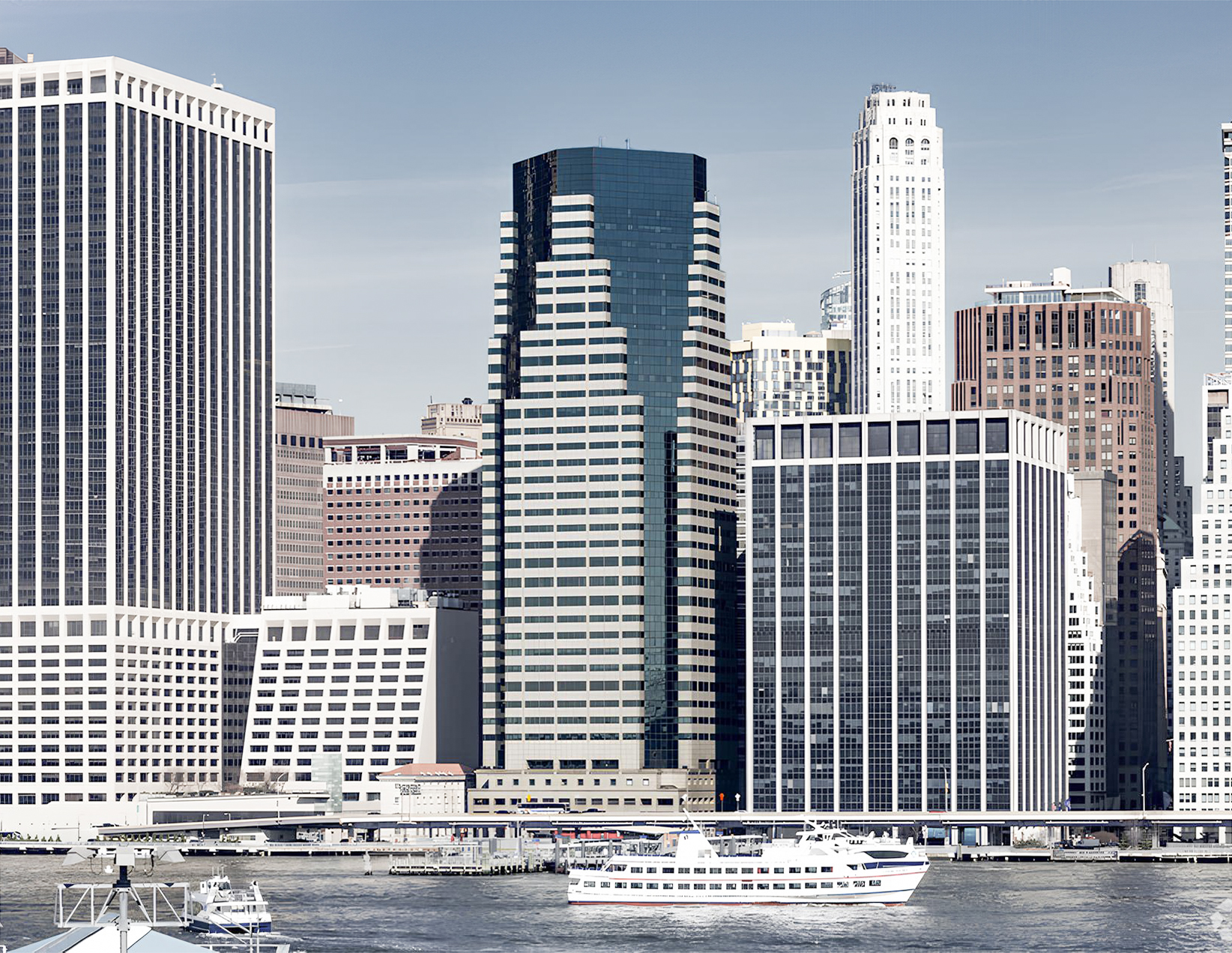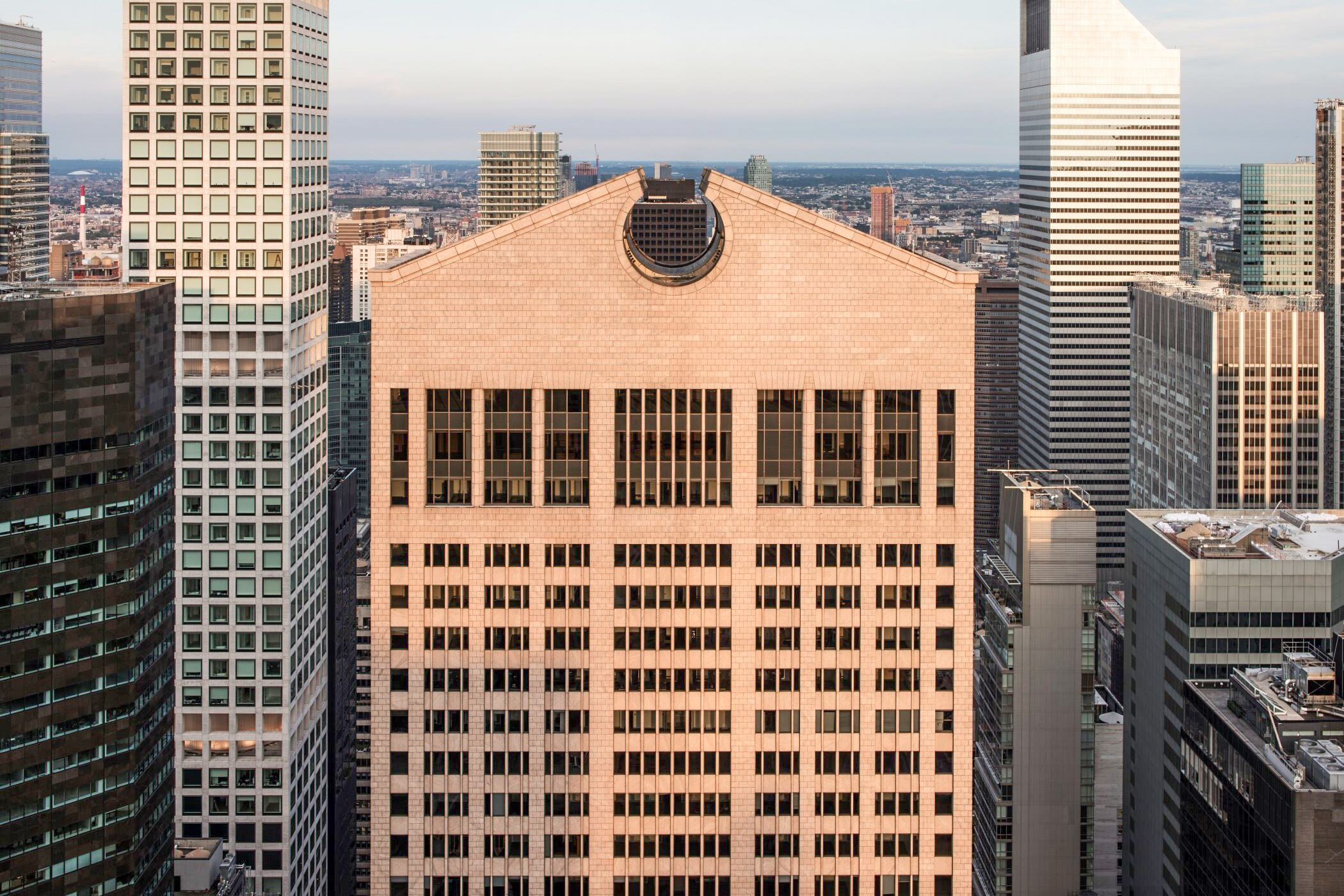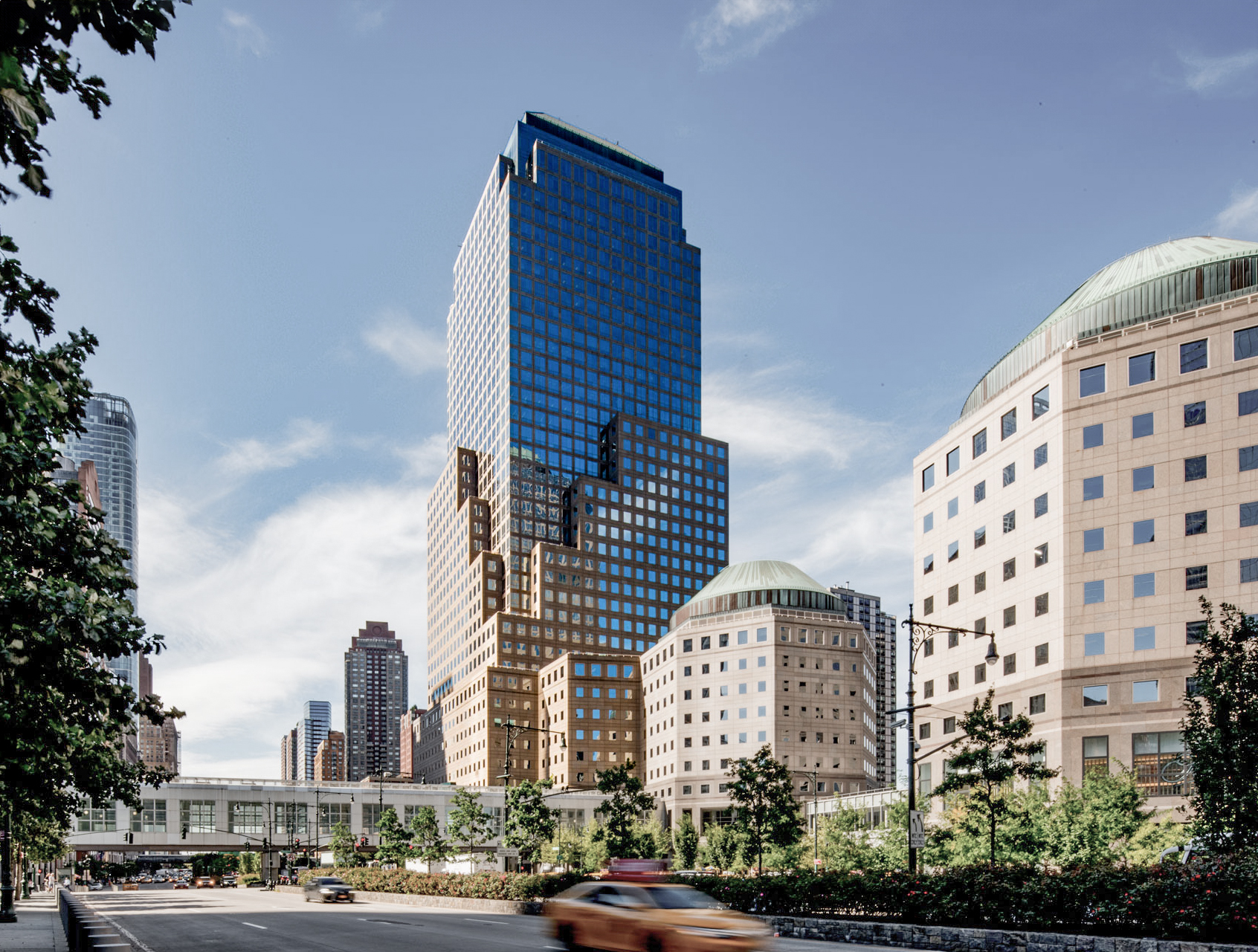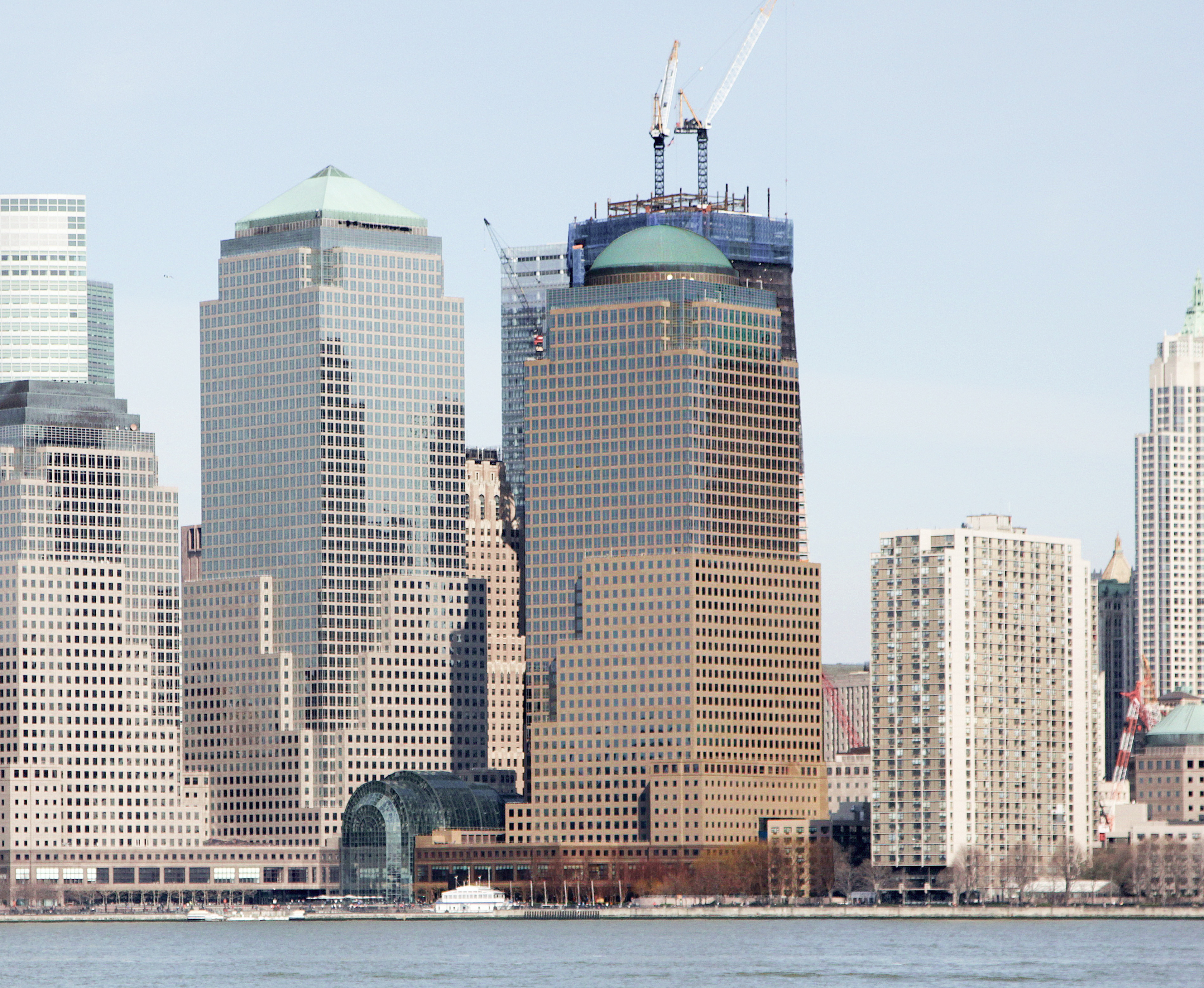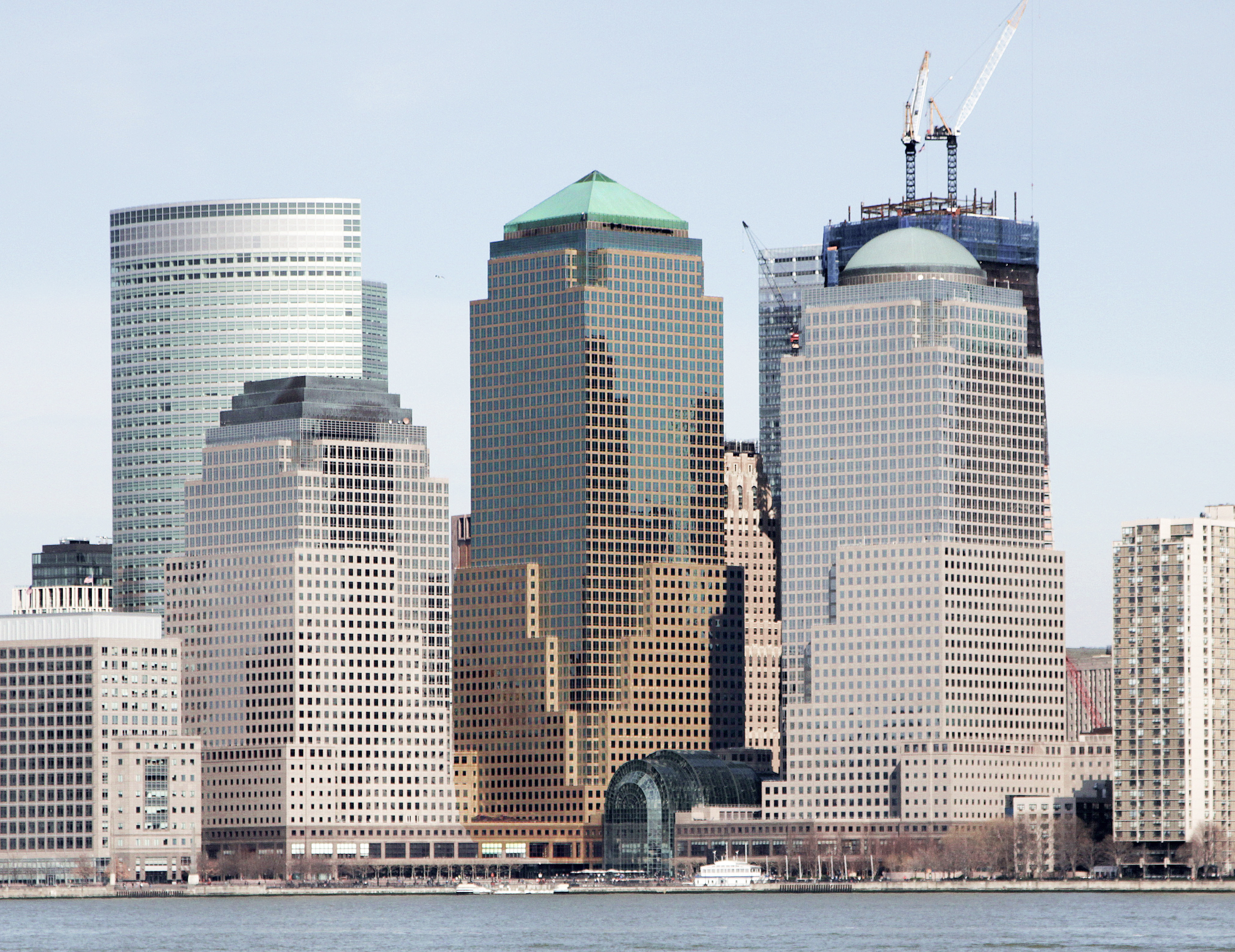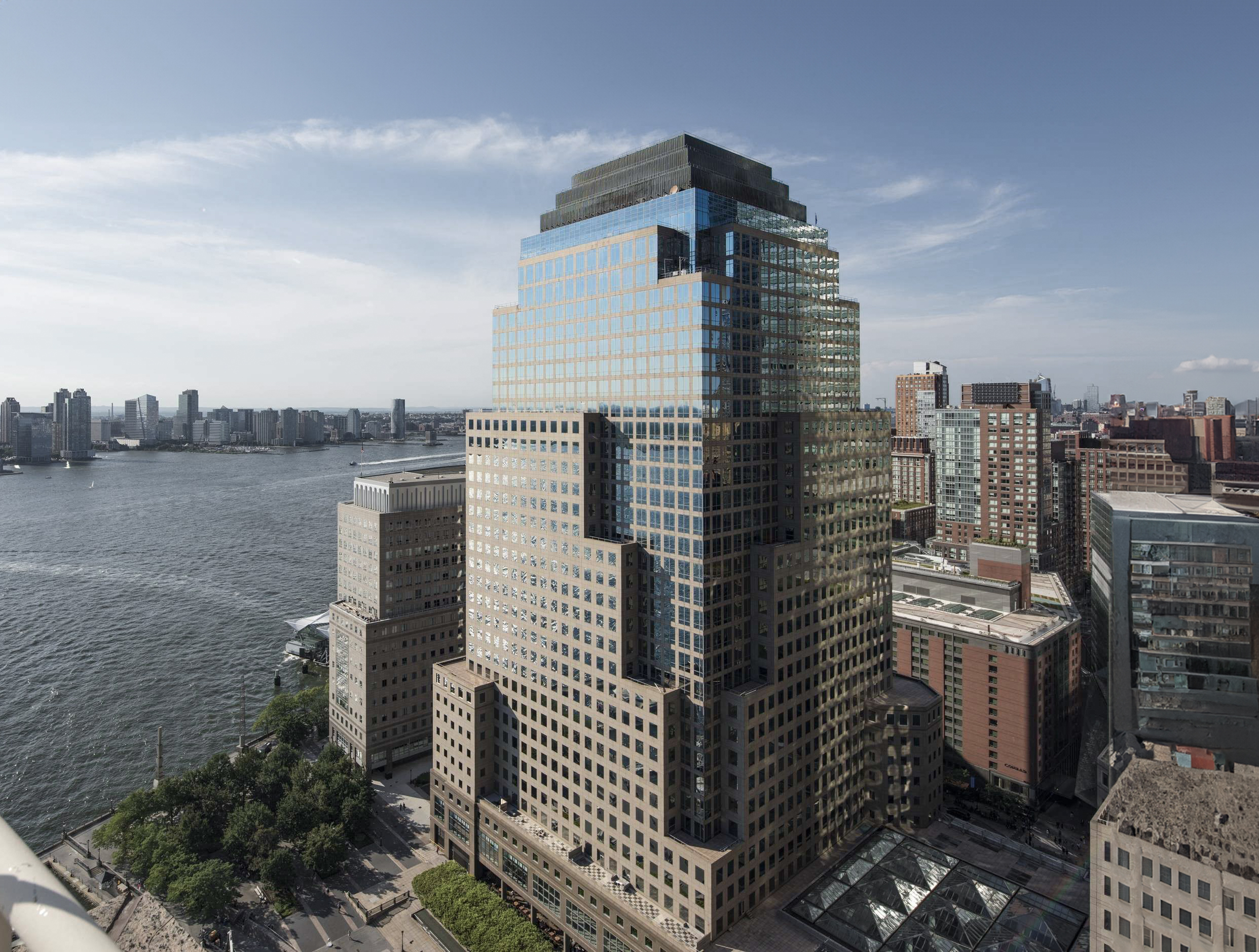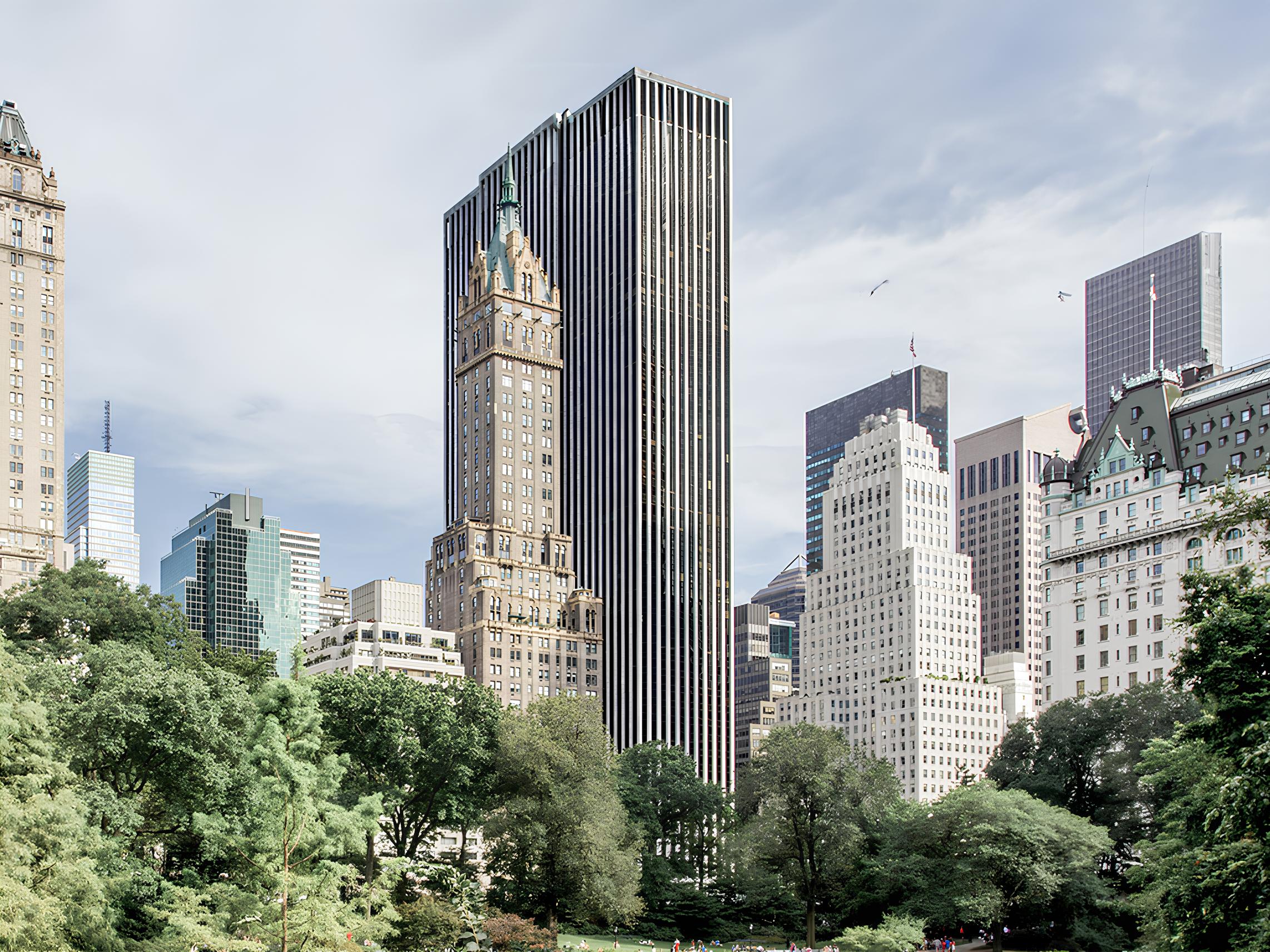The 32 Old Slip Building is a Postmodernist skyscraper designed by Edward Durell Stone & Associates, and built between 1983 and 1987 in New York, NY.
32 Old Slip Building is not the only name you might know this building by though. Between 1987 and 1995 it was also known as One Financial Square.
Its precise street address is 32 Old Slip, New York, NY. You can also find it on the map here.
The building underwent a major restoration in 2019. The architect commissioned to undertake this restoration was TPG Architecture.
